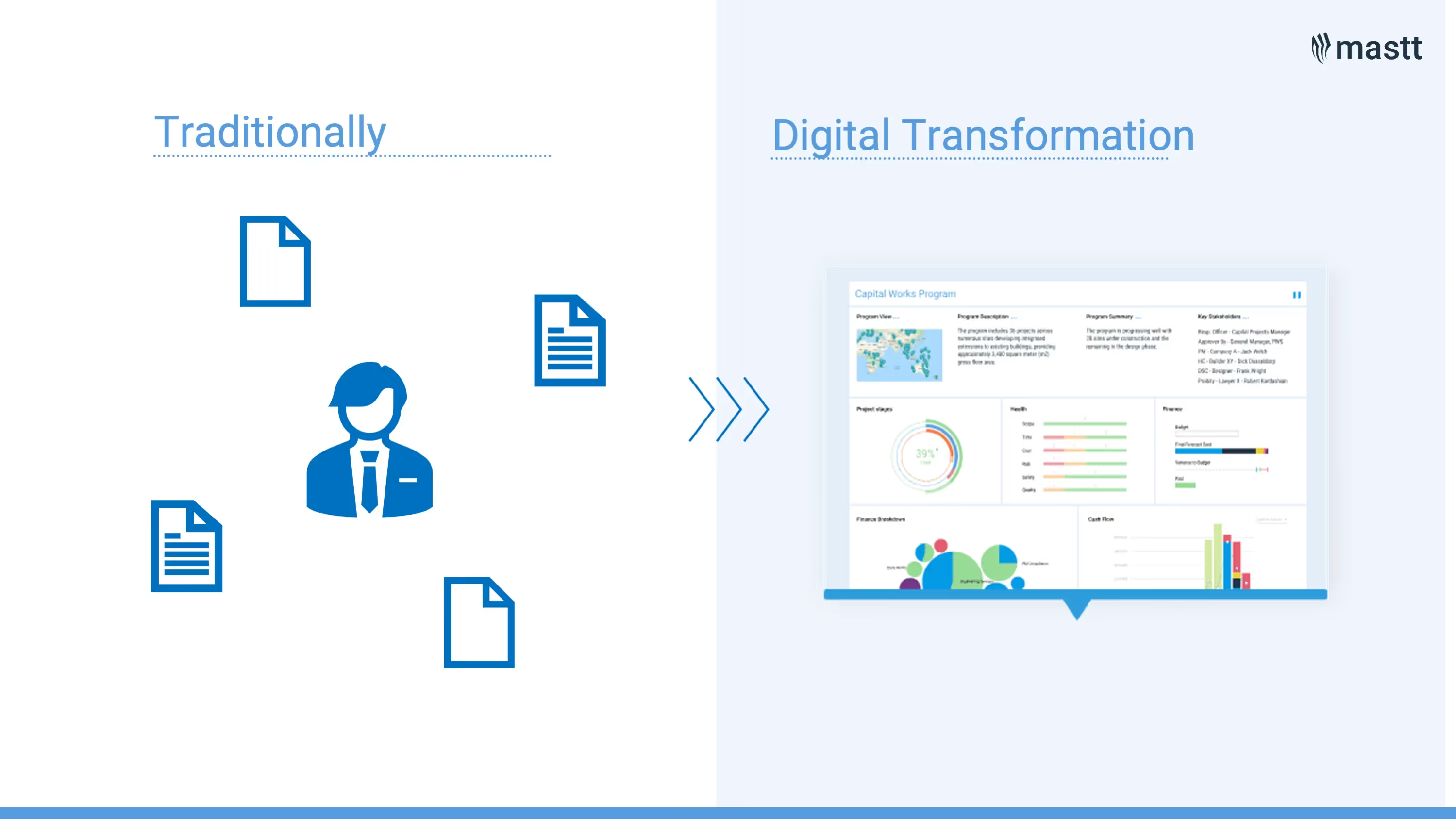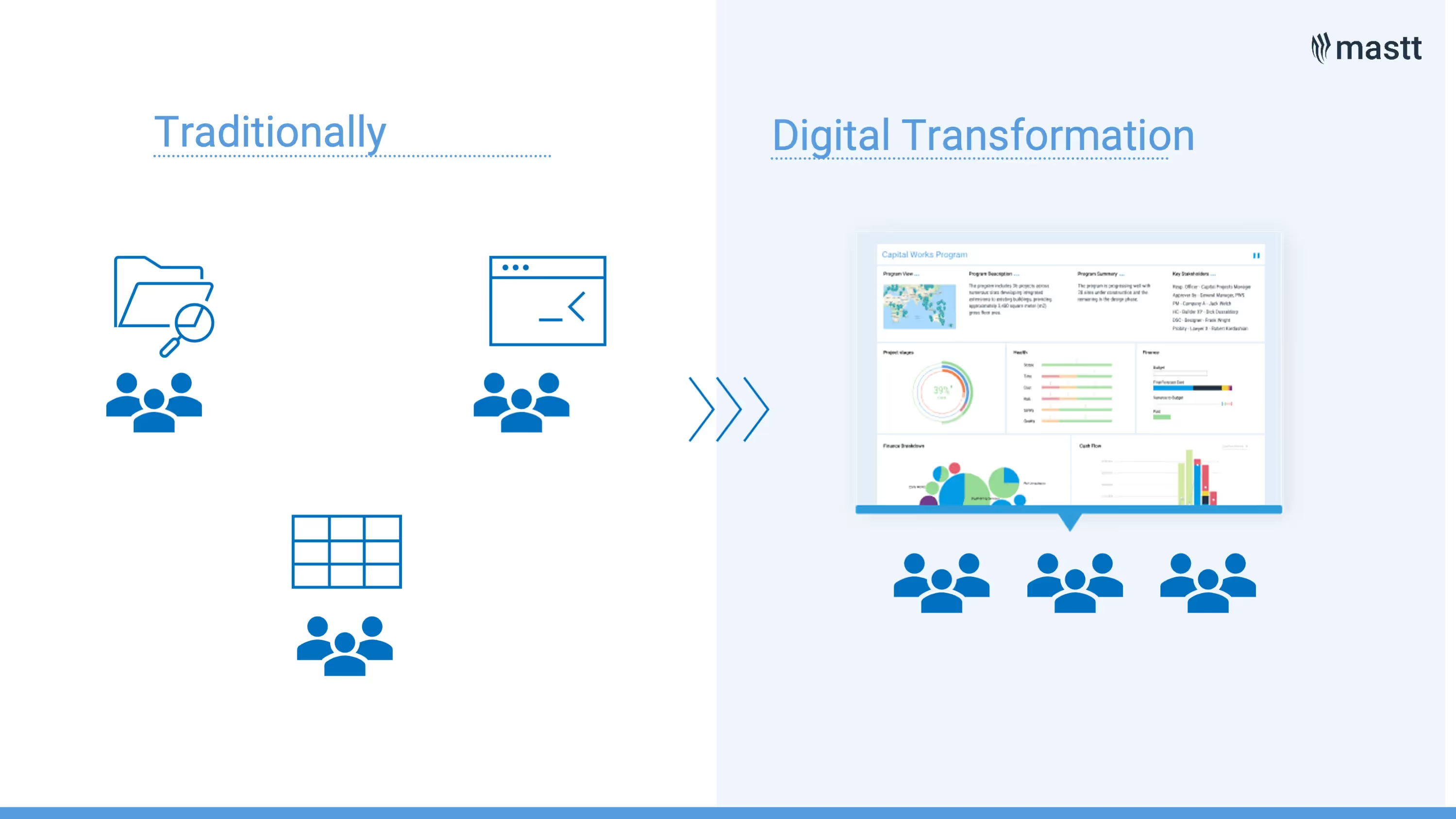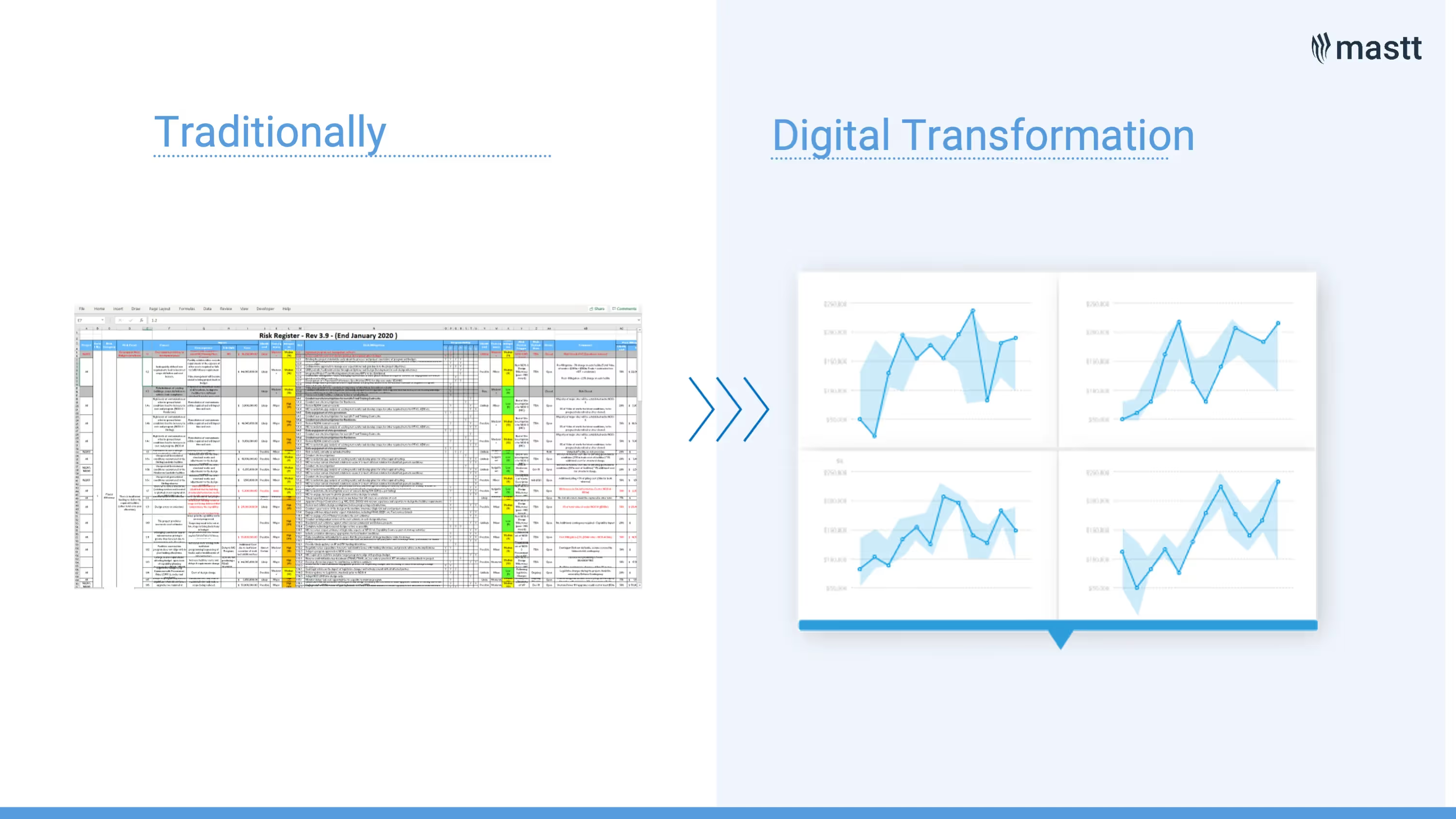Today in the construction industry, we talk a lot about digital transformation as a way to boost productivity and quality of building. We tend to ask ourselves what a digital transformation means, how we embrace this change and how we can reap the rewards.
In fact, looking at the construction industry as an eco-system, it is still challenging to implement a digital transformation. It is no surprise productivity has only increased by 1% over the past 20 years compared to other industries.
Construction projects are complex with a variety of contracts, engineers, architects, subcontractors, suppliers, and multiple business divisions working together. Most are still reliant on outdated technology; many are still using physical paper forms to complete onsite inspections and reporting.
While there are many approaches to digitising a construction business, it ultimately comes down to which one fits the needs of your company. You will need a clear picture of what the transformation should accomplish, and what digital tools are right for the business’s delivery processes.
Let's start from the aspects that a digital transformation usually brings values to.
Cost
As the number of mega-projects increases, budget can get spent quickly in a short amount of time. If organisations are not tracking their project cost effectively, cost overruns are typically unavoidable. A study by Grattan Institute last year into large-scale capital works spotted an overrun of $24 billion so far on just six current projects.
Relying on an outdated legacy process is largely accountable for cost overruns. A traditional procedure to cost control would involve the CFO collecting multiple capital project reports from different teams, then putting together a final forecast cost. This process is most likely done in Excel spreadsheets.
These days, technology has allowed us to pull those costs together without the need to manually input by the CFO/financial controller. Cloud-based software enables project managers to automate the process of putting those costs together, with a clear, transparent record of inputs from different teams.

Time
Time is needed to make decisions around procuring resources/contracts, forecasting cashflow, building reports, sharing info. Time overruns are a typical outcome of project delivery teams using multiple systems to manage their parts.
Huge amounts of time can be saved when information is efficiently recorded and tracked across organisations in a common data system. Having a "single source of truth" for all teams, all departments to follow, project delivery teams can say goodbye to manually exchanging information across systems and finding the information they need.

Risk
To effectively manage project risks, we first start with measuring the cost & time impacts of each type of risk and communicate these findings to various stakeholders to remove/eliminate these risks.
Traditionally, all of the above risks are presented in data-heavy spreadsheets/systems, making it hard to control and focus on what the priorities are. With modern technology such as the Mastt system, PMs can prioritise them and classify into high, medium and low risk, and all risks can be visually represented on a dashboard for the whole team to look at (and act on).

Data
Many industry experts and popular business publications, including The Economist, have recently attested that data, not oil, is now the most valuable resource in the world.
And just like oil, raw data isn’t valuable in itself. The value is created when it is gathered completely and accurately, connected to other relevant data, and done so in a timely manner. Properly refined, usable data serves as a decision-making tool, allowing companies to react to changes and be proactive and intentional in their decision-making.
To make that happen, we first need to make sure our data is clean and accurate, without any unnecessary manipulation. With a large volume of organisational information within and across projects, it would take huge amounts of time for construction project administrators to manage and analyse data using standard tools such as Excel. Organisations must have tools that auto aggregate data, react instantly to even the smallest changes in data, and at the same time provide simpler interfaces that visually represent the data in a manner that is easy to understand and digest as a client/user.
The result? At Mastt, we have seen a massive reduction in reporting time. Our clients previously had to wait for a minimum of 30 days to complete project reports, only to receive an outdated one that is hardly relevant at the time presented higher up in the organisation. Now it can be accessed in real-time for them in the Mastt dashboard, allowing program managers to analyse reports near instantly.

Building a truly digital capital portfolio means more than adopting ad-hoc technologies into existing project delivery frameworks. Starting with a strong digital foundation with data from day one sets up your organisation to succeed in the delivery of capital works.
In this article we only give you a starting point to consider what success would look like for digital transformation. Again, it is important to select the right digital tools depending on your project so that you don’t end up with a square peg.
If you are seeking for a solution tailored to your use case, contact Mastt at hello@mastt.com to chat with one of our Capital Solutions Specialist.










